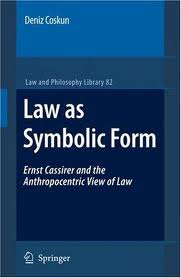Thursday, December 29, 2011
Pursuit Of Self-Liberation
The Evolution Of Symbolic Forms
Jan. ’80
Myth, or the mythical-religious consciousness of man, for Cassirer, is understood to be the proto-reality out of which symbolic forms evolve e.g. language, art, religion, science etc. These symbolic forms, in turn, are thought to result from the human spirit’s progressive movement towards more liberated forms of self-expression. From within the matrix of mythical thought, according to Cassirer, evolves the differentiation of the “I” of our personality and, over time, the more potent symbolic forms that define the present state of our modern knowledge and belief.
The origin of the self-liberation process (and knowledge in general), is first discovered in mythical thought as the capacity to order and differentiate, and then the self liberation process, in its capacity to transcend its own reality, metamorphizes into higher levels of symbolic expression. These higher levels of symbolic expression move self-liberation in the direction toward more constancy, endurance and certainty. Cassirer informs us:
“For a glance at the development of the various symbolic forms shows us that their essential achievement is not that they copy the outward world in the inward world or that they simply project a finished inner world outward, but rather that the two factors of “inside” and “outside,” of “I” and “reality” are determined and delimited from one another only in these symbolic forms and through their mediation. …The crucial achievement of every symbolic form lies precisely in the fact that it does not have the limit between I and reality as preexistent and established for all time but must itself create this limit–and that each fundamental form creates it in a different way.” (Ernst Cassirer, Mythical Thought, 1955, p. 155-156)
Cassirer tells us that Pre-moderns, as they engaged their environment through emotions, desires and work, acquired the ability, via symbolic representation, to objectify nature–the nature of both “inner and outer reality.” There was (and is) a double movement that arises from one’s interaction with his/her environment; in one direction there develops an objectification of one’s self-nature and in the other direction there arises the objectification of the social and cultural contents of society. From Cassirer’s point of view, art, myth, magic and ritual are co-creative products arising from this objectifying movement, which in turn, arises from the work that people do in society. “For the form of society,” Cassirer states, “is not absolutely and immediately given any more than is the objective form of nature, the regularity of our own world of perception. Just as nature comes into being through a theoretical interpretation and elaboration of sensory contents, so to the structure of society is mediated and ideally conditioned reality.” (Ernst Cassirer, The Philosophy of Smbolic Form, 3 vol., vol. 2, Mythical Thought, 1955, pl 193) In his three volume work, The Philosophy of Symbolic Forms, Cassirer concentrates his focus on the nature and origins of symbolic form as it first arises in language and myth and then, over time, develops into the theoretical orientations of scientific thought. The utility of symbolic forms, if that is the right word, is not just about a “thing” to be apprehended, it is about a movement towards constancy, endurance and certainty, and that objective applies to both culture and mind.
Subscribe to:
Post Comments (Atom)







No comments:
Post a Comment